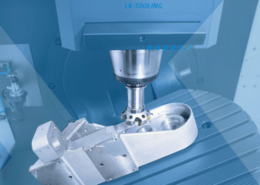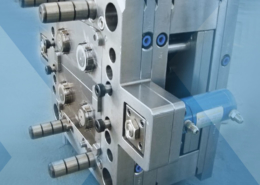
Unveiling the Wonders of PVC Injection Molding
Author:gly Date: 2024-06-08
In the realm of plastics manufacturing, Polyvinyl Chloride (PVC) injection molding stands as a cornerstone of innovation and versatility. PVC, a thermoplastic polymer renowned for its durability, flexibility, and cost-effectiveness, finds ubiquitous applications in diverse industries, from construction and automotive to healthcare and consumer goods. In this comprehensive exploration, we delve into the intricacies of PVC injection molding, unraveling its significance, applications, and potential for future advancements.
1. Understanding PVC Injection Molding
PVC injection molding is a manufacturing process wherein molten PVC resin is injected into a mold cavity under high pressure, allowing it to cool and solidify into the desired shape. This technique offers unparalleled versatility, enabling the production of a wide range of products with varying complexities and sizes. From pipes and fittings to electrical enclosures and automotive components, PVC injection molding caters to diverse applications across multiple industries.
Material Properties and Characteristics
PVC exhibits a unique combination of properties that make it an ideal candidate for injection molding. It boasts excellent chemical resistance, mechanical strength, and flame-retardant properties, making it suitable for applications requiring durability and longevity. Additionally, PVC is inherently recyclable, contributing to sustainability initiatives and circular economy principles.
Process Optimization and Efficiency
Efficient process optimization is essential to maximize the benefits of PVC injection molding. Manufacturers employ advanced machinery, precision molds, and automated systems to enhance productivity, minimize waste, and ensure consistent quality. Additionally, they leverage simulation tools and computational fluid dynamics (CFD) to optimize mold design, material flow, and cooling kinetics, thereby reducing cycle times and production costs.
Applications Across Industries
The versatility of PVC injection molding transcends boundaries, finding applications across a myriad of industries and sectors. In the construction industry, PVC is widely used for manufacturing pipes, fittings, profiles, and cladding systems, owing to its corrosion resistance, durability, and ease of installation. Similarly, in the automotive sector, PVC components, such as dashboard panels, door trims, and interior accents, contribute to lightweighting initiatives and design flexibility.
2. Advantages and Challenges
While PVC injection molding offers numerous advantages, it also presents certain challenges that manufacturers must navigate to ensure optimal outcomes and customer satisfaction. Understanding these dynamics is essential to harnessing the full potential of PVC as a manufacturing material.
Advantages of PVC Injection Molding
PVC injection molding offers several advantages over alternative materials and processes. It enables the production of complex geometries with high precision and dimensional stability, allowing for intricate designs and tight tolerances. Moreover, PVC's inherent resistance to chemicals, weathering, and UV exposure enhances product longevity and performance, making it suitable for outdoor and harsh environment applications.
Challenges and Considerations
Despite its many benefits, PVC injection molding presents certain challenges, including material degradation, processing variability, and environmental considerations. PVC resin is susceptible to degradation at high temperatures, leading to discoloration, degradation of mechanical properties, and emission of toxic gases. Additionally, processing variability, such as viscosity fluctuations and melt instability, can affect product quality and consistency, necessitating careful process control and monitoring.
Environmental Considerations
Environmental sustainability is a key consideration in PVC injection molding, given concerns about plastic waste and environmental pollution. While PVC is inherently recyclable, challenges related to material purity, compatibility, and contamination limit the feasibility of mechanical recycling. Manufacturers are exploring alternative recycling methods, such as chemical recycling and feedstock recycling, to overcome these challenges and promote a circular economy approach to PVC utilization.
3. Innovations and Future Directions
As technology advances and sustainability imperatives drive change, PVC injection molding is poised for further innovation and evolution. Emerging trends and developments offer glimpses into the future of PVC manufacturing and its potential to address global challenges and societal needs.
Sustainable Materials and Additives
The integration of sustainable materials and additives is a key focus area for advancing PVC injection molding. Manufacturers are exploring bio-based plasticizers, renewable reinforcements, and biodegradable additives to enhance the environmental profile of PVC products. Additionally, innovations in compounding technologies and material formulations enable the production of PVC compounds with reduced environmental impact and enhanced performance characteristics.
Digitalization and Industry 4.0 Integration
The advent of digitalization and Industry 4.0 technologies is transforming the landscape of PVC injection molding, enabling real-time monitoring, predictive maintenance, and data-driven decision-making. Smart manufacturing solutions, such as IoT-enabled sensors, predictive analytics, and machine learning algorithms, optimize process parameters, minimize downtime, and improve overall efficiency. Moreover, digital twin simulations and virtual prototyping facilitate rapid iteration and design optimization, accelerating product development cycles and time-to-market.
Circular Economy Initiatives
Embracing the principles of the circular economy is essential to unlocking the full potential of PVC injection molding while mitigating environmental impacts. Manufacturers are investing in closed-loop recycling systems, material recovery facilities, and eco-design strategies to minimize waste generation and maximize resource efficiency. Moreover, collaborative initiatives across the value chain, such as extended producer responsibility (EPR) schemes and voluntary industry commitments, promote sustainable practices and circularity in PVC utilization.
4. Conclusion: Shaping a Sustainable Future
In conclusion, PVC injection molding represents a versatile and indispensable manufacturing technique with vast potential for innovation and sustainability. From its unique material properties to its diverse applications and ongoing advancements, PVC continues to play a pivotal role in shaping our built environment and meeting the evolving needs of society.
As we navigate the complexities of a rapidly changing world, it is imperative that we embrace innovation, collaboration, and sustainability in PVC injection molding. By harnessing technological advancements, promoting circular economy principles, and fostering a culture of responsible stewardship, we can ensure that PVC remains a viable and sustainable material for generations to come. Through collective effort and shared commitment, we can shape a future where PVC injection molding serves as a catalyst for positive change, driving progress towards a more resilient, equitable, and sustainable world.
GETTING A QUOTE WITH LK-MOULD IS FREE AND SIMPLE.
FIND MORE OF OUR SERVICES:

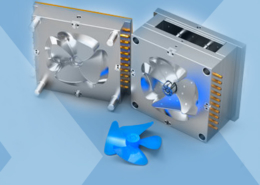
Plastic Molding
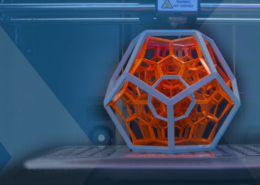
Rapid Prototyping
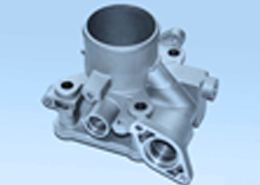
Pressure Die Casting
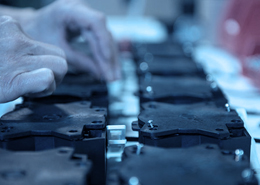
Parts Assembly
